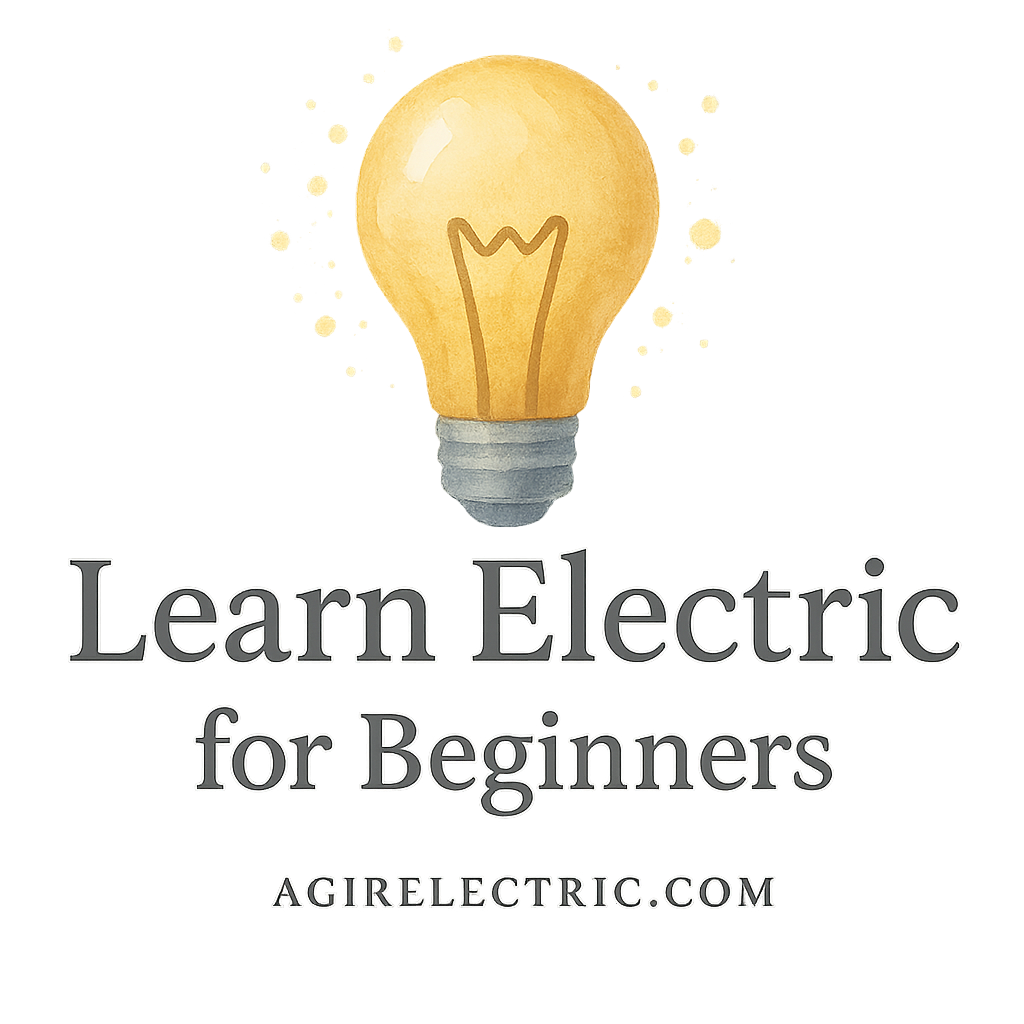Introduction to Electric Concepts
Let’s face it — electricity is one of those things most of us use every single day but rarely understand. If you’re stepping into the world of electrical DIY or just want to stop feeling confused every time someone mentions a multimeter, you’re in the right place. This guide breaks down 10 electric concepts every beginner should understand — no engineering degree required. We’ll keep it simple, clear, and yes, safe.
Want to get even deeper into the basics? Check out Electric Basics for Beginners.
1. Voltage: The Pressure Behind Electric Flow
What is Voltage?
Voltage is like water pressure in a hose. It’s what pushes electric current through a wire. Without voltage, electricity wouldn’t go anywhere. Measured in volts (V), it tells us how much potential energy is in an electrical system.
Why Voltage Matters
Think of voltage as the “oomph” behind your electrical system. High voltage can deliver more power but also poses greater danger. Beginners should learn how to measure and understand voltage to avoid accidents.
Explore the Basics tag and Learn Electric tag to dive deeper.
2. Current: The Flow of Electricity
Understanding Electric Current
Current is the actual flow of electric charge, kind of like the water moving through the hose. Measured in amperes (amps), current tells us how much electricity is flowing.
Types of Current: AC vs DC
There are two main types: Alternating Current (AC), used in home outlets, and Direct Current (DC), common in batteries. Knowing the difference is vital when working on different types of projects.
Related read: Home Electric Projects
3. Resistance: Controlling the Flow
How Resistance Works
Resistance slows down the electric current — kind of like a kink in your garden hose. It’s measured in ohms (Ω). The more resistance, the less current flows.
Role of Resistors in Circuits
Resistors are components that add resistance on purpose. They help control how much electricity flows to each part of a circuit.
Brush up more with the Electrical Terms tag.

4. Ohm’s Law: The Electric Equation
Applying Ohm’s Law in Real Life
Ohm’s Law is a formula: V = I x R (Voltage = Current × Resistance). It helps you calculate any of the three values if you know the other two. Handy, right? It’s a foundational formula for anyone doing electric work.
Use it while Troubleshooting Electric Issues.
5. Power: How Energy is Used
Calculating Electrical Power
Power tells us how much energy is used over time and is measured in watts (W). The formula is P = V x I (Power = Voltage × Current). It’s crucial for understanding how much load a circuit can handle without overheating.
For deeper understanding, visit the Fix tag.
6. Circuits: The Pathways for Electricity
Series vs Parallel Circuits
Circuits are like roadways for electricity. In a series circuit, electricity flows in one path. In a parallel circuit, it has multiple paths. Most home wiring uses parallel circuits because they allow devices to work independently.
Explore Wiring setups for more insight.
7. Grounding: Keeping You Safe
Why Grounding is Important
Grounding provides a safe path for excess electricity. Think of it as an emergency exit. It helps prevent shocks and fires when something goes wrong. Always check if a device is grounded before working on it.
More safety info: Electric Safety Precautions
8. Circuit Breakers and Fuses
How They Work to Protect You
These devices automatically stop the flow of electricity if something goes wrong, like a short circuit. It’s like your home’s built-in electrical bodyguard.
Make sure you know where your breaker box is and label all switches properly.
See: Tag: Safety
9. Electrical Tools Every Beginner Needs
Must-Have Tools
You don’t need a fancy toolbox to start. At minimum, you’ll want:
- Voltage tester
- Wire stripper
- Screwdriver set
- Electrical tape
- Multimeter
Browse more at Electric Tools & Equipment.
Learning to Use a Multimeter
A multimeter is like the Swiss Army knife for electrical work. It lets you measure voltage, current, and resistance — all in one device. Start by learning the basic settings and practicing on low-voltage circuits.
Want more? Dive into Multimeter Tag
10. Safety Precautions for Working with Electricity
Common Mistakes to Avoid
- Working on live wires
- Using metal ladders
- Ignoring warning signs like sparks or burning smells
- Not turning off the breaker
Tips for Staying Safe
- Always use insulated tools
- Wear rubber-soled shoes
- Test before you touch
- Follow a checklist
Safety is non-negotiable. Learn more here: DIY Mistakes & Safety Precautions
Conclusion
Getting a grip on electricity doesn’t have to be shocking — pun intended. These 10 electric concepts every beginner should understand are the foundation for any DIY or home improvement work involving electricity. From voltage to safety tips, you’re now better equipped to explore the electrifying world around you.
Want to explore more DIY electric projects or fix common household issues? Head over to AGIR Electric for in-depth guides and resources.
FAQs
1. What is the difference between voltage and current?
Voltage is the pressure that pushes electric charges, while current is the actual flow of electric charges.
2. Can I work on my home’s electrical wiring without a license?
It depends on your local laws, but for safety and code compliance, it’s often best to consult a licensed electrician.
3. Why do I need a multimeter?
A multimeter helps you diagnose problems in circuits and measure voltage, current, and resistance accurately.
4. Are AC and DC interchangeable?
No, devices are usually designed for either AC or DC. Using the wrong type can damage equipment or cause hazards.
5. What happens if I don’t ground my circuit?
Without grounding, there’s a higher risk of electric shock or fire if a fault occurs.
6. How can I tell if a fuse is blown?
Check for a broken filament or use a multimeter to test continuity.
7. What’s the safest way to start learning electricity?
Start with low-voltage projects, use proper safety gear, and check out beginner resources like Electric Basics for Beginners and Electric Safety Precautions.
Tags: beginner, diagnose, diy, electric, fix, home improvement, measurement, multimeter, questions, safety, tools, troubleshooting, upgrade, wiring


